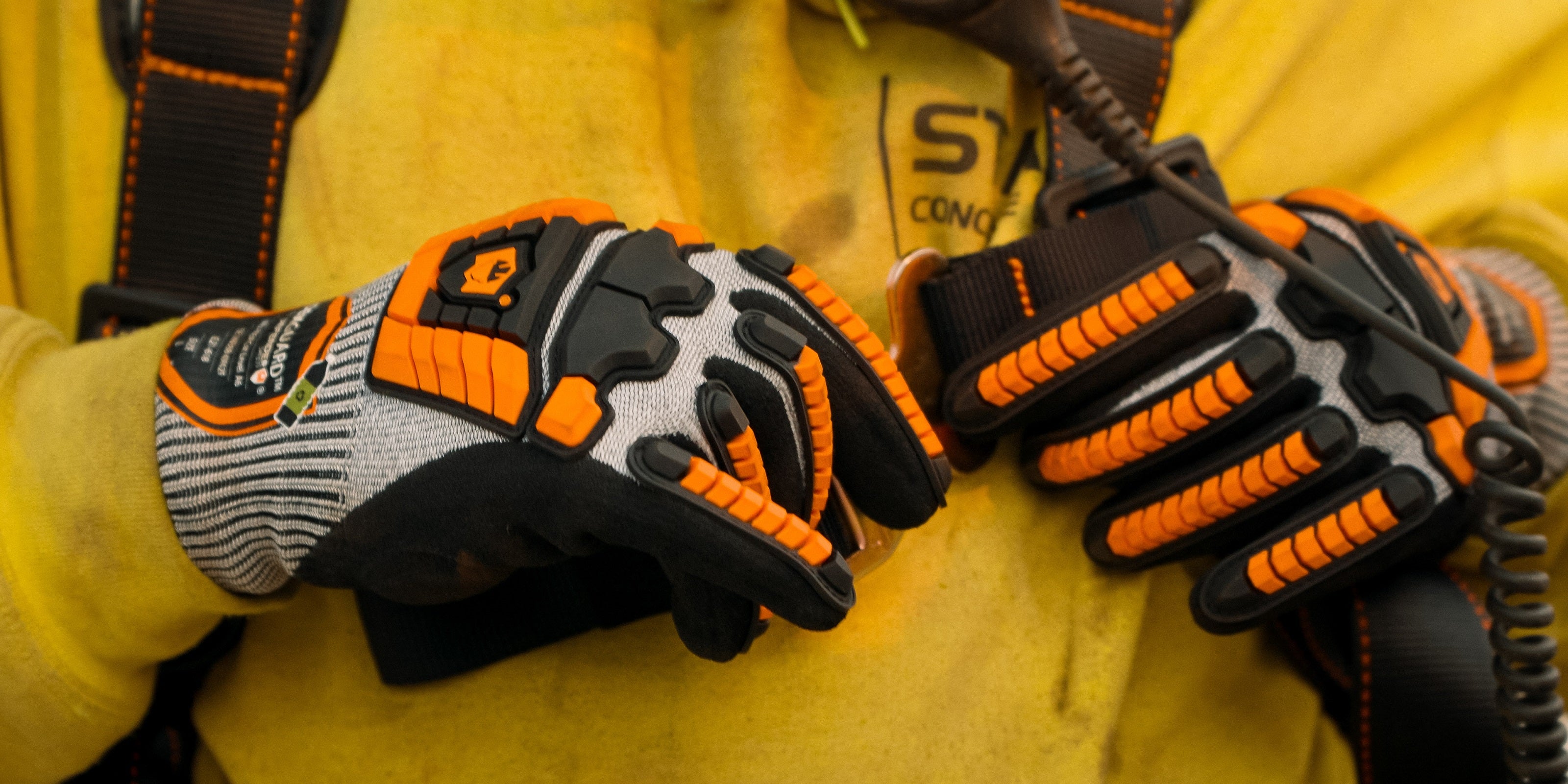The Guide to hand protection
Hands being crucial for the execution of daily tasks, an injury causing loss of function, adhesion, amplitude of motion or even an amputation, is extremely debilitating.
Research has revealed that around a third of those who undergo a hand injury will also suffer from depression, post traumatic stress or both, resulting in a reduction in quality of life. Hand and wrist injuries are the most common type of work-related injuries, leading to 8,400 hospitalizations each year
The report shows that the most common causes of these injuries are food-related accidents without proper protection, electrical tools and knife damage. Production, construction, wholesale and retail are the most dangerous sectors of injury.
If wearing proper security gloves is reported to reduce hand frequency by around 60-70%, it is not surprising that laws are serious about hand protection. Employers should not only provide free equipment (PPE) specialized for personal protection, but also evaluate all other WHS options in the control hierarchy.
Given the vast industry spectrum representing the risk of hand injuries and the many different hazards that may exist in each industry, a detailed risk assessment is required to choose the right gloves. You should choose protective gloves that provide protection inherent to the danger - there is a risk of chemical or welding, cutting, crushing, or vibration.
Other considerations should include dexterity and sensation requirements when used or when the gloves are used in wet, greasy or cold conditions. In some cases, the solution can be a combination of two different gloves.

Comfort and adjustment
Many workers give up the use of safety gloves because they feel uncomfortable. However, a high quality and well -adjusted glove will be more comfortable; Thus, more likely to be worn and less likely to be removed by workers. In addition, poorly installed gloves - too free or too dense - do not provide adequate protection, as they provide less control, dexterity and clutch and can pose dangers.

Cut protection
Cuts and open wounds are the most common labor injuries, which require 35% of the accounting of work accident claims for hospitalization and work-related injuries, and cutting of protective gloves is essential.
However, reducing protection is not enough, and other glove features must be compatible with the application - if specific to adhesion, dexterity, or wet or oily conditions.
Particularly after protection standards and renewal in 2016, segment cutting assessments should also be studied.

HAVS Protection
The impact of the vibrations of tools and machines can cause traffic violation in the hands and forearms and constant damage to the nerves, tendons, muscles, bones and joints known as syndrome vibration (HAV).
Symptoms may include tingling and numbness in the fingers and loss of strength or pain in the hands or hands. It is important to use gloves to minimize risk.
 Wet and cold conditions
Wet and cold conditions
Manipulation of cold, wet or oily materials in cold conditions with the wrong type of gloves causes safety issues as the hands get colder, resulting in loss of sensation and control.
Gloves that provide protection against elements while remaining light, breathable, functional, and respond to specific applications are important for increased safety in cold conditions.
 Chemical danger
Chemical danger
There are no types of gloves that can be protected from all chemical hazards and compatibility diagrams that you should consult when deciding on the right gloves for your particular application

